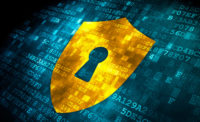About this time of year, all kinds of companies in a variety of sectors engage in the crystal-ball gazing tradition of making predictions for the future. But along came 2020, and amazingly, even in a year like no one could have imagined, some of last year’s predictions were still spot on, except for one huge exception: timing.
Predictions about digital and cloud transformation, 5G, cybersecurity, mobile banking, biometrics and more are all there in black and white from 2019 (and sometimes even before), but what no one predicted was the unprecedented hyper speed at which these technologies came at us. The pandemic turbo charged the entire technology engine with the seismic and sudden shift to a remote and mobile world.
Trends that emerged in 2020, along with some new predictions, will have a huge impact on 2021 as these technologies continue to evolve and deploy even more quickly. Adoption of emerging tech will be even faster next year and securing data in these environments must finally move to the top of the priority list because more depends on security than ever before.
A Distributed Workforce is Here to Stay and Will Evolve to Arenas Never Imagined
The remote work trend, already steadily increasing pre-pandemic, accelerated exponentially in 2020 as a result of the pandemic Some workers will return the office, but many will indefinitely continue to work from anywhere. The lessons learned in 2020 will force IT organizations to invest more in physical and digital security to address new threat vectors resulting from a remote work culture. With more and more devices connected to networks, employee cybersecurity training will become a top business initiative as individual accountability increases. Organizations will require more cyber distancing to reduce the mixing of personal devices and corporate data to support compliance requirements. There will also be a new wave of remote workers. While the first wave was white-collar workers in the service industry, the second wave will include supply chain and manufacturing workers made possible because of technologies such as telexistence.
The Password Will Finally Disappear as Digital Identity Becomes a Great Equalizer
As mobility reached a new level of critical need in 2020, the need for digital identity capabilities also crystalized. Lockdowns and remote work on a global level meant strong identity verification became the lifeblood for enrolling new customers, payment data encryption, and multiple authentication schemes, including biometrics. In the New Year, digital identity capabilities will become the great equalizer in the fight against fraud. Financial services, healthcare, government, mobile and other industries will need to build and maintain trust as data breaches continue with regularity and compliance mandates get more stringent.
The Fight for Data Privacy Will Make Bigger Headlines
Demand for privacy protection, snowballing for years, stole much of the spotlight in 2020 as data breaches soared. Global Data Protection Regulation (GDPR) fines added up and the first company to be fined under the California Consumer Privacy Act (CCPA) surfaced, all while individual states continued to refine their privacy laws. The sudden invalidation of the legal framework known as Privacy Shield, by European Union ruling called Schrems II, dealt a blow to nearly 6,000 companies in the U.S. who rely on trans-Atlantic data flows, renewing debate over whether and when a federal privacy law might come into existence. With consumers’ heightened awareness of their privacy rights, companies that leverage data discovery technologies and protect sensitive data (with encryption) will keep themselves out of unwanted headlines in 2021.
5G Will Provide New Capabilities and the Biggest Attack Surface Ever
As expected, 5G began to fuel the proliferation of IoT. The push for more mobile services, demand for streaming, touchless interactions via mobile devices and the need to accommodate a remote workforce sped up appetite for this new generation of capabilities. In 2021, the continuation of the 5G rollout which will allow billions of connected devices, will create the largest attack surface that’s ever existed, making early threat detection a top protector of data. Enterprises and employees, eager to capture new capabilities, must make access management, authentication and data discovery a top priority as data sprawl pushes the boundaries of computing devices.
Cybercrime Rings Will Be Well Funded and Motivated
As organizations – including hospitals and other healthcare entities – struggled to contend with the global pandemic, organized cybercrime rings wreaked havoc. Ransomware-as-a-Service rose up with an alarming potency that crippled government agencies, schools and businesses. Unfortunately, one of the biggest threats in the New Year will be devastating: The United Nations estimates that organized cybercrime will cost the global economy around $5.2 trillion between now and 2025.
In Response, Businesses Will Take the Fight to the Hackers
It was predicted that the volume and efficacy of cyberattacks would increase in 2020, but no one knew the true extent and speed to which malware and ransomware would explode. In 2019, there was a 41% increase in ransomware attacks, and this number skyrocketed this year. For 2021, Cybersecurity Ventures predicts that a business will fall victim to an attack every 11 seconds, and the estimated cost to businesses will be around $20 billion. In the New Year, business will finally take the fight to hackers and go on the offensive by using deceptive technology to proactively set traps and allow access to fake data to frustrate attackers. These tactics, along with multi-factor authentication and access management controls, will reign supreme.
Quantum Will Make Significant Headway
The race for quantum supremacy is on as major players like Amazon, Google, IBM and others heavily invest in research and development. Advances made in 2020 will drive momentum in the New Year. Universally regarded as among the most significant threat to cybersecurity in history, quantum computing in the hands of bad actors will put data protected by today’s conventional encryption methods at risk. Enterprises that hold the world’s most sensitive data have no time to waste in rolling out plans for enabling quantum-resistant algorithms in the data security products they deploy.
While 2020 definitely threw us all for a loop, one thing remained clear…innovation continued to thrive. Here’s to an exciting 2021, as we look forward to watching the proverbial cybersecurity envelope get pushed and technology areas we have been monitoring for some time finally begin to take shape.




